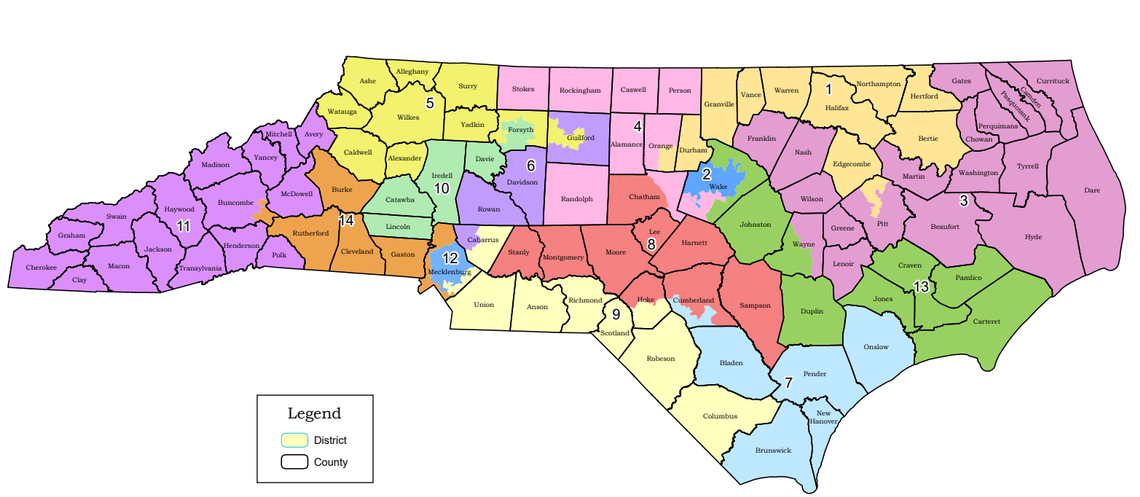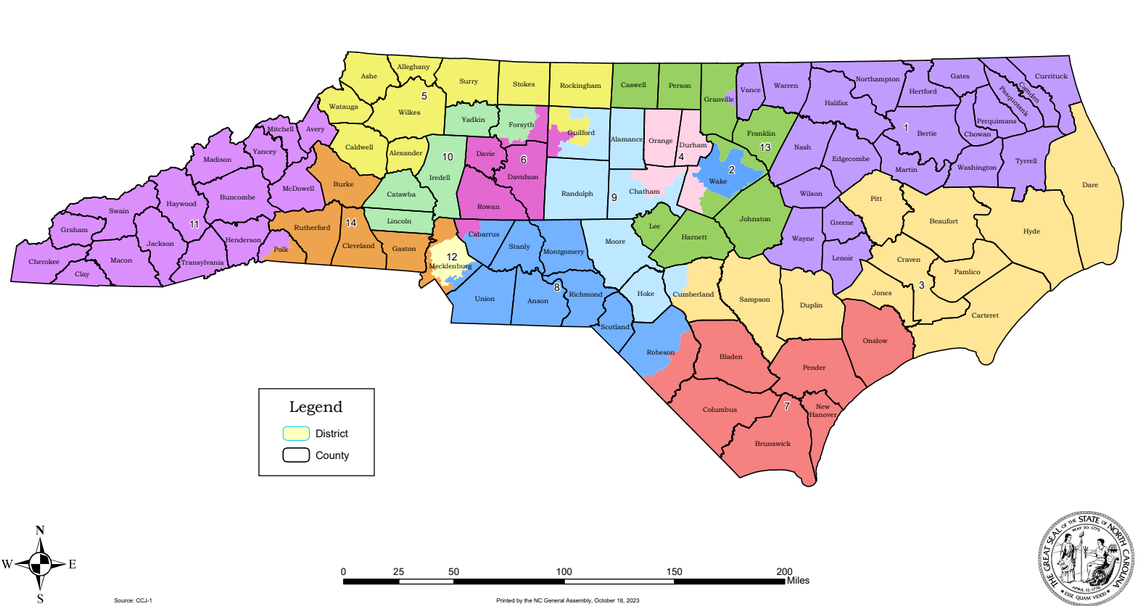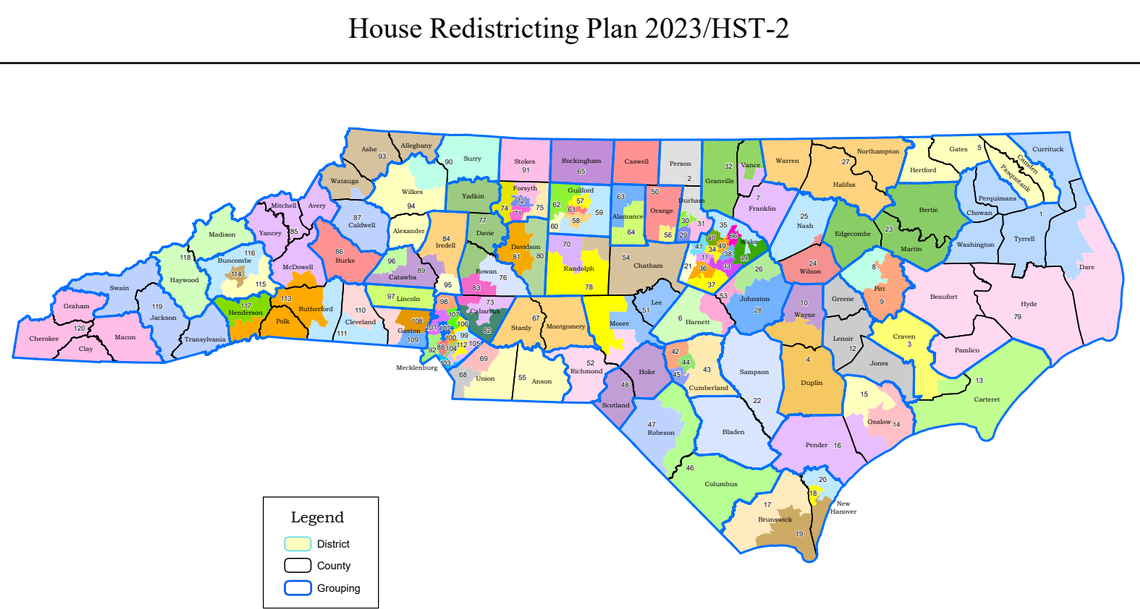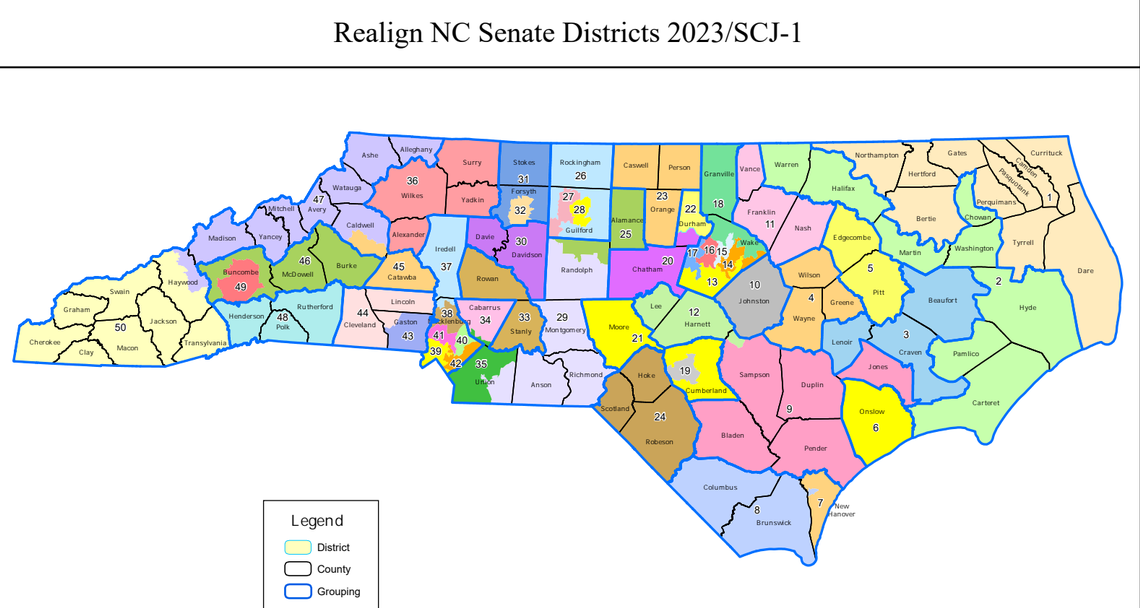Republicans release new NC maps for 2024 likely to expand GOP power in Congress
North Carolina Republicans released a slate of proposed electoral maps on Wednesday, aiming to reshape congressional and legislative districts under new precedent from the state Supreme Court, which ruled to limit its own power to decide on claims of partisan gerrymandering.
Legislators unexpectedly filed two different options for the state’s congressional maps without saying which would be voted on. Both maps appear to give Republicans a far greater advantage than the current districts, which were drawn by court order in 2022 following a gerrymandering trial.
Republican leaders have said they will allow amendments to be proposed to the maps, but if the party is united they can use their supermajority to pass all new maps without Democratic support. The governor, currently Democratic Gov. Roy Cooper, has no role in redistricting.
Cooper released a statement on Wednesday evening accusing Republicans of gerrymandering, noting a provision passed in the state budget that removes most redistricting communications from public record.
“Enabled by the state Supreme Court’s partisan reversal of constitutional law, Republican legislators have rolled out their latest illegal maps that show gerrymandering on steroids,” he said. “Drawn in the back room and armed with their new law that keeps their plotting secret, they have used race and political party to create districts that are historically discriminatory and unfair.”
House and Senate redistricting committees plan to discuss the new maps on Thursday but will not take votes. The Senate’s agenda included both congressional maps for consideration.
Shortly after maps were released, House Democratic leader Robert Reives and Senate Democratic leader Dan Blue released a joint statement denouncing Republicans not drawing the maps in a public process.
“Democrats are seeing these maps at the same time as the public and the press,” he said. “This secretive process has shut out real, meaningful input from the minority party, stakeholders and most importantly the public. We are reviewing these maps in real time and will no doubt find them to be partisan gerrymanders that violate the rights of minority voters in North Carolina.”
Republican-created maps have been struck down several times by courts — just as Democratic-drawn maps were before the GOP gained power — which have ruled that the districts gave the GOP an unconstitutional advantage in elections. In 2022, after judges struck down two maps from the legislature, they appointed a bipartisan group of “special masters” to draw the congressional map.
These new districts ended up electing seven Republicans and seven Democrats to the U.S. House. However, a court-drawn map can only be used for one election, and the new maps are unlikely to result in the same breakdown.
After the GOP swept statewide judicial races in 2022, the state Supreme Court’s new Republican majority reversed the court’s previous gerrymandering decision, ruling that the court has no jurisdiction over claims of partisan gerrymandering.
That ruling also allowed the General Assembly to draw new legislative maps as well, instead of automatically adopting the ones that had been struck down by an earlier court decision.
Congressional maps
Republicans filed two bills with options for congressional maps.
Using the website Dave’s Redistricting to analyze data from previous elections, it appears that one of the options, Senate Bill 756, could give Republicans an 11-3 advantage while the other, Senate Bill 757, could give them a 10-4 breakdown, though one of the Democratic districts would be very competitive.


State House map
The map for the state House includes 71 Republican-leaning districts and 49 Democratic-leaning districts, according to data analysis using Dave’s Redistricting.
In a statement released Wednesday, the proposed House map’s sponsors, Reps. Destin Hall, Sarah Stevens, and Jason Saine, said: “This map adheres to established redistricting principles and complies with all legal guidelines. We look forward to voting on this proposed legislation next week.”

State Senate map
The Senate map includes 32 Republican-leaning districts and 18 Democratic-leaning districts, according to data analysis using Dave’s Redistricting.

Democrats in trouble
No matter which congressional map Republicans choose, several of North Carolina’s Democrats in Congress are likely to lose their seats.
Both map proposals spell trouble for Reps. Kathy Manning of Guilford, Wiley Nickel of Wake and Jeff Jackson of Mecklenburg counties. Their districts are split in such a way that a Republican victory is almost inevitable, based on data from past elections.
The fate of Rep. Valerie Foushee, of Orange County, could depend on which congressional map the legislature chooses. SB 757 leaves her in a relatively safe district. However, SB 756 places her in a heavily red district.
Freshman Democrat Rep. Don Davis, of Greene County, gets a safe district in SB 756, taking Durham County, which is currently part of Foushee’s district. In the other map, though, Davis would run in a district that leans Democrat, but is still very competitive.
